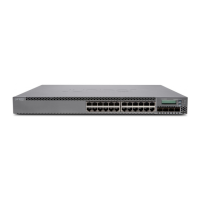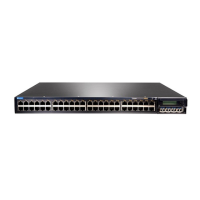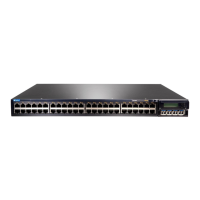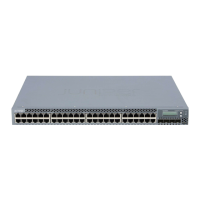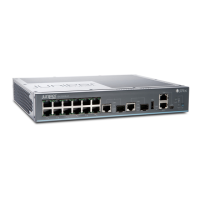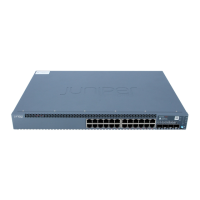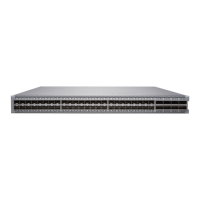•
Interaction Among the DHCP Relay Agent, DHCP Client, and DHCP Servers on page 47
•
DHCP Liveness Detection on page 48
Interaction Among the DHCP Relay Agent, DHCP Client, and DHCP Servers
The pattern of interaction among the DCHP Relay agent, DHCP client, and DHCP servers
is the same regardless of whether the software installation is on a router or a switch.
However, there are some difference in the details of usage.
On routers—In a typical carrier edge network configuration, the DHCP client is on the
subscriber’s computer, and the DHCP relay agent is configured on the router between
the DHCP client and one or more DHCP servers.
On switches—In a typical network configuration, the DHCP client is on an access device
such as a personal computer and the DHCP relay agent is configured on the switch
between the DHCP client and one or more DHCP servers.
The following steps describe, at a high level, how the DHCP client, DHCP relay agent,
and DHCP server interact in a configuration that includes two DHCP servers.
1. The DHCP client sends a discover packet to find a DHCP server in the network from
which to obtain configuration parameters for the subscriber (or DHCP client), including
an IP address.
2. The DHCP relay agent receives the discover packet and forwards copies to each of
the two DHCP servers. The DHCP relay agent then creates an entry in its internal client
table to keep track of the client’s state.
3. In response to receiving the discover packet, each DHCP server sends an offer packet
to the client. The DHCP relay agent receives the offer packets and forwards them to
the DHCP client.
4. On receipt of the offer packets, the DHCP client selects the DHCP server from which
to obtain configuration information. Typically, the client selects the server that offers
the longest lease time on the IP address.
5. The DHCP client sends a request packet that specifies the DHCP server from which
to obtain configuration information.
6. The DHCP relay agent receives the request packet and forwards copies to each of the
two DHCP servers.
7. The DHCP server requested by the client sends an acknowledgement (ACK) packet
that contains the client’s configuration parameters.
8. The DHCP relay agent receives the ACK packet and forwards it to the client.
9. The DHCP client receives the ACK packet and stores the configuration information.
10. If configured to do so, the DHCP relay agent installs a host route and Address
Resolution Protocol (ARP) entry for this client.
11. After establishing the initial lease on the IP address, the DHCP client and the DHCP
server use unicast transmission to negotiate lease renewal or release. The DHCP relay
agent “snoops” on all of the packets unicast between the client and the server that
47Copyright © 2017, Juniper Networks, Inc.
Chapter 4: DHCP Relay Agent

